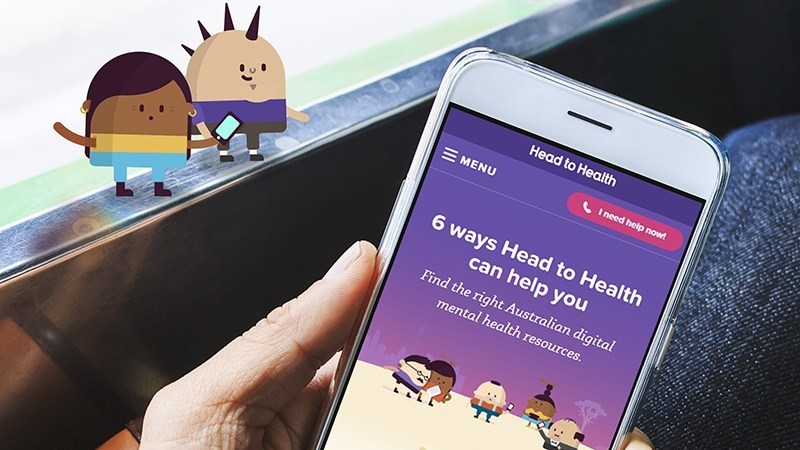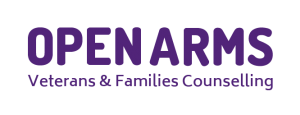Treating panic disorder and agoraphobia
-
In the previous 12 months it is estimated that up to 17% of transitioned ADF were affected by panic attacks, and 12% by agoraphopia.
-
No single tool is available for diagnosing panic disorder or agoraphopia, however a combination of screening tools and questions that may assist diagnosis are presented below.
- Cognitive behavioural therapy (CBT) is the preferred approach for the treatment of panic and agoraphobia.
Key characteristics
A panic attack is characterised by a sudden surge of intense fear or discomfort that is accompanied by a number of somatic and cognitive symptoms such as:
- a racing heart
- hyperventilation
- fear of dying
Panic disorder involves at least one panic attack, combined with a persistent concern about having another attack or the consequences of the attack.
Agoraphobia is a separate diagnosis that involves experiencing marked fear of situations where panic symptoms may occur. The fear of panic attacks can lead to significant avoidant behaviour. For example, a veteran may avoid physical exercise in order not to experience panic-like symptoms such as sweating or accelerated heart rate.
Agoraphobia involves marked fear or anxiety about situations where:
- escape might be difficult
- help might not be available in the event of a panic attack
These situations include:
- travelling on public transport
- visiting shops or cinemas
- standing in a crowd
- being outside of the home alone
A veteran with agoraphobia is likely to:
- avoid such situations
- endure them with intense fear or anxiety
- only be able to face them with a trusted friend or relative
Prevalence
While panic disorder and agoraphobia tend to co-occur, either disorder can be diagnosed in the absence of the other. Approximately one in thirty Australians will suffer from panic disorder at some point in their lives, while one in forty will experience agoraphobia. In a given year, approximately 2.6% of Australians will experience panic disorder, while 2.8% will experience agoraphobia (Andrews et al., 2018).
Anxiety disorders were the most common type of 12-month mental disorder among transitioned ADF. With one in three (37%) experiencing an anxiety disorder in the last 12 months. This includes:
- panic attacks (17.0%)
- agoraphobia (11.9%)
For more statistics, see the prevalence of mental health disorders in the veteran community on the DVA website.
Screening and assessment
There is limited evidence for the effectiveness of screening instruments for most anxiety disorders. No specific screening test is recommended in the Royal Australian and New Zealand College of Psychiatrists clinical practice guidelines for the treatment of panic disorder, social anxiety disorder and generalised anxiety disorder (Andrews et al., 2018). However, useful questions to screen for panic disorder from the Mini International Neuropsychiatric Interview (MINI) include:
- In the past month, have you on more than one occasion had spells or attacks when you suddenly felt anxious, frightened, uncomfortable or uneasy, even in situations where most people would not feel that way?
- Did the spells peak within 10 minutes?
Veterans may be screened for agoraphobia with a question from the MINI:
- In the past month, have you felt anxious or uneasy in places or situations where you might have a panic attack or panic-like symptoms, or where help might not be available or escape might be difficult (e.g. being in a crowd, standing in a queue, when you are away from home or alone at home, or when crossing a bridge or travelling in a bus, train, or car)?
If the veteran answers ‘yes’ to any of these questions, the practitioner should then:
- assess the frequency and nature of the panic attacks
- rule out other psychiatric disorders, physical conditions, medications or recreational drugs that could account for the panic attacks
- develop a profile of the veteran’s agoraphobia and avoidance by asking them to describe the activities or places they avoid due to fear of a panic attack
Two scales which assess components of panic disorder (namely panic attacks, health-related concerns, anticipatory anxiety and avoidance) are:
- Panic Disorder Severity Scale (PDSS; Houck et al., 2002)
- Panic and Agoraphobia Scale (PAS; Bandelow, 1995)
The PAS gives a measure of symptom severity and response, whereas the PDSS uses a score cut-off to indicate whether an individual is likely to have panic disorder.
More broadly, the Fear Questionnaire (FQ) is a useful tool for identifying situations that trigger anxiety, and the Depression, Anxiety and Stress Scale (DASS-21) is a general measure that can help track stress and anxiety as well as counselling outcomes. Neither is a diagnostic measure for panic or agoraphobia.
Important assessment considerations
In diagnosing panic disorder, it is important to establish that the panic attacks are occurring:
- unexpectedly and,
- not in the context of another anxiety disorder
For example, a veteran with PTSD might experience panic attacks when watching a documentary on the war in Afghanistan. However this should not be considered indicative of panic disorder, as the panic is occurring in response to a specific and predictable context, rather than occurring unexpectedly.
Practitioners should be mindful of the risk of unnecessary medical investigations to provide reassurance to the veteran, as this can create an unhelpful cycle of anxiety and investigation of medically unexplained or somatic symptoms. Once an appropriate set of investigations has been done, repeating these at the veteran’s request reinforces his or her belief that ‘something was missed’.
Psychological interventions
Treatment of panic disorder should begin with psychoeducation and advice on lifestyle factors, followed by specific programmatic treatment such as cognitive behavioural therapy (CBT).
Psychoeducation and self-management strategies
The aim of psychoeducation is to explain and demystify symptoms so that the veteran can regain a sense of control, and a sense of hope. It is also important to talk about common misconceptions veterans may have about panic attacks, such as mistaking symptoms for a heart attack or stroke. Practitioners need to discuss:
- the nature of anxiety and the fight–flight response, i.e. explain that although panic attacks may feel dangerous, they are not
- the relationship between hyperventilation and panic
- breathing retraining and hyperventilation control
- common fears held by people who have panic attacks, e.g. any medical-related fears the veteran may have regarding their physiological panic symptoms
- the prevalence of panic disorder and agoraphobia
It is helpful to discuss treatment goals with the veteran, namely:
- control and cessation of panic attacks
- control and cessation of fear-driven avoidance
- reducing vulnerability to relapse
If substance use is a problem, including benzodiazepine misuse, encourage the veteran to reduce his or her substance use. This is a significant issue as 20 per cent of Australians with panic disorder and 13 per cent of those with agoraphobia also have an alcohol use disorder. A brief intervention that includes education about substance use can be effective.
If benzodiazepines are used, they should be taken on a regular schedule as far as possible, rather than on an ‘as needed’ or ‘pro re nata’ basis.
Cognitive behavioural therapy
Cognitive behavioural therapy (CBT) is the most effective psychological treatment for panic disorder and agoraphobia. Clear explanations of panic disorder and/or agoraphobia, how it is conceptualised, and the rationale for treatment are critical to forming a solid basis for this phase of treatment. Talking to a veteran, together with the veteran’s family, about his or her anxiety is the start of treatment. A summary of useful information to be conveyed to the veteran and his or her family is included in the text box below. Whilst CBT has some general techniques applicable across a range of disorders, specific CBT techniques for targeting panic and/or agoraphobia are:
- Exposure to internal symptom cues or interoceptive exposure – in panic disorder, the fear is often associated with the symptoms themselves. As such, when conducting exposure it is the internal physical symptoms that the veteran needs to confront. An example of such exposure would be to gradually get the veteran to hyperventilate in session to induce some of the sensations associated with panic, and then repeat this exercise until the veteran’s distress and fear associated with the symptoms subsides.
- Cognitive therapy – this approach is beneficial for addressing misinterpretations of symptoms such as fears of going mad, of having a heart attack or of losing control. In panic disorder, ‘catastrophic misinterpretation’ of the physical symptoms appears to be central to the maintenance of the disorder.
- Anxiety management – breathing retraining and hyperventilation control strategies are important treatment components.
- In vivo exposure – this involves assisting the veteran to gradually confront and reintegrate activities and places that he or she has been avoiding due to the associations with panic.
Prior to engaging in in vivo exposure, the veteran should have:
- a good understanding of the nature of panic disorder and/or agoraphobia
- learned to effectively manage the symptoms through cognitive and breathing strategies, and
- had exposure to the internal cues for panic and learned to manage his or her response
The strategies outlined above are targeted at managing acute panic and anxiety, and helping the veteran to resume avoided activities. It is also important to assist the veteran in reducing their baseline level of arousal through exercise, general relaxation training and the scheduling of pleasant activities.
Psychological treatment setting and duration
Panic disorder or agoraphobia is typically treated in an outpatient setting. Treatment duration will vary from 8 to 12 sessions, sometimes more depending on the severity, and will most commonly be in the form of weekly sessions of 1–2 hours. Telephone-administered treatment may be considered for those who cannot attend face-to-face treatment. Treatment of panic disorder or agoraphobia rarely requires hospitalisation, unless there is concurrent severe depression, suicidal intent or substance use requiring detoxification
Pharmacological interventions
Psychological interventions are the preferred approach for the treatment of panic and agoraphobia. However, pharmacotherapy may be considered in moderate to severe cases, where psychological treatment is not acceptable or available, or fails to produce a sufficient response.
The evidence is strongest for the use of antidepressant medications. However, there is little evidence that pharmacotherapy has a lasting role after completion of a course of treatment. Selective serotonin reuptake inhibitors (SSRIs) and serotonin-noradrenaline reuptake inhibitors (SNRIs) are recommended as the first line of pharmacotherapy.
Relapse rates are approximately:
- one third of people within 6 months of discontinuing antidepressant medication
- or two-thirds within 3 years of discontinuing (Andrews et al., 2018)
Benzodiazepines are no longer recommended for the treatment of panic disorder or agoraphobia. Benzodiazepines pose a risk of dependency and difficulty discontinuing.
If benzodiazepines are considered necessary for control of severe symptoms. However, the course of treatment should be kept as short as possible. Benzodiazepines should not be taken to manage symptoms during in vivo exposure. Their use negates any positive effect of exposure-based treatments.
See also
-

Panic and agoraphobia
Panic attacks occur when our fight-flight-freeze response is triggered without an obvious external threat. Learning how to relax and control your breathing can help you manage panic attacks. -
 Self-help resourcesHead to health
Self-help resourcesHead to healthHead to Health provides links to trusted Australian websites and apps to support the self-management of mental health symptoms, such as anxiety. visit Head to health
-
 Group treatment programUnderstanding anxiety
Group treatment programUnderstanding anxietyA program that teaches you strategies and skills for managing anxiety.





